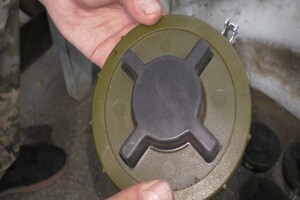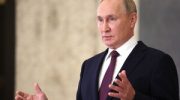Recorded use of “psychological” to prohibited by the Ottawa Convention mines.

The Russian occupation army does not hesitate to use what is prohibited by international conventions armament. This also applies to mines that Russian troops even plant in washing machines . Thus, the use of so-called “psychological” mines, as well as their variations prohibited by the Ottawa Convention, has been recorded against Ukraine. This was stated in an interview with the “Glavkom” by the expert of the Association of Sappers of Ukraine Igor Molodan.
Often the Russian army uses an antipersonnel mine POM-3 with seismic sensors.
“Such mines are scattered from the air, although there was a case that was dropped with a grenade launcher – a mine was attached to a billet and fired,” said the expert.
The principle of operation of this mine is as follows. When falling to the ground, the projectile goes into combat. Immediately after that, it “throws out the sun” sensors within a radius of ten meters. They record seismic activity. As a person approaches, the vibration of the earth's surface increases and the mine explodes.
This type of mine is called “psychological” because the soldiers see them and, of course, do not go in the direction of their location. It will be recalled that they are prohibited by the Ottawa Convention. They are not fixed by metal detectors and are scattered by the hundreds or even thousands.
The task of such weapons is mostly psychological – to maim, to cause fear, “the expert explained.
“Petals” will remind of themselves more than one year after the war.
“Simple mines – they are for combat, and these lie for a long time, can grow grass. And the war is over, and people are suffering… “, – summed up Molodan.
Read also: Russians have left many traps in Kyiv region, it is dangerous to return – OVA
Earlier it was reported that in Kharkiv region Delayed mines and parachute bombs .
See special topic: Ukrainian students in the United States honor the memory of Ukrainians who died at the hands of the Russian occupiers Students from 12 American universities took part in the commemoration


